|
In what is becoming a bit of a tradition Anna and I hired a car for the Easter break and picked a random direction to head in. We did this last year and despite everyone telling us there is no way we would get accommodation anywhere without booking ahead we had a fantastic holiday and wandered aimlessly around Victoria for a few days. We decided we would try our luck for another year, so Thursday night all packed and ready we headed down to Philip Island on Western port Bay. The Thursday before Easter is usually easy to get accommodation as many people don't head off till Friday. We managed to get a hotel room directly across from the beach which was nice. On the Friday we had a wander round the island. I was disappointed the weather was so nice as I thought I might be able to record some good wave noises near the blow-hole, but the sea was virtually calm. Easter is a holiday for us, so I don't specifically go looking for sounds, but as always I have the gear in the car and if something offers itself I will take the opportunity to capture interesting sounds. Anna is amazingly patient which makes things easier. We got to see a lot of things today including a farmer market just off the main island, some very large Pelicans being fed on the mainland and lots of fantastic green grass and trees, which living in he city has made a real novelty. The only thing I got to record today was one of the horses near the farmers market. There was a lot of background noise from visitors and campers so all I got was a single horse snort. Its a very good snort, but it is not much for an entire day's exploring. Oh well, we'll see what happens tomorrow.
0 Comments
Location Noosa North Shore Equipment Zoom H4N DPA 4061 What a great way to spend the last day of the year. Anna and I went horse riding along the beach just north of Noosa on the North Shore. You have to get a ferry across the river with your car and this is where the beach highway starts and heads north. We only went just across the river to where the horse rides started and then we rode for two hours out to the beach and along. I attached the two DPA 4061 mics to my belt to see if I could capture any of the sounds of being on the horse. I knew I wasn’t likely to record much, but I thought maybe I could record some of the clinking and creaking of the saddle and other bits. Sadly this was another failed session as all I really recorded was my pouch bouncing off the mics, possibly useful for something, but not really very horsie. The ride itself was one of the best things we have done, it was so nice to ride along the beach in the surf and the sun. I hope that this is a sign of things to come for 2010, because if it is then next year is going to be a fantastic year.
I think this is a good place to say Happy New Year to everyone, I hope 2010 is a year of great opportunity for everyone and that we can all live happily and safely through another year. Location Noosa Queensland Equipment Zoom H4N NTG3 & DPA 4061 Single hand setup Anna and her mother have gone down to Brisbane for the day so I am going to use the time to collect a few sounds that I have been thinking about since we arrived in Noosa. Like many houses in hot climates the house here has ceiling fans in most rooms. On the high setting the fans rotate pretty quickly and one in particular sounds a little like a helicopter in stealth mode. I made sure I captured some material from different angles as the sound generated from below is quite different from when the mic is positioned above the blades. Even at right angles and close to the blades you get a different sound. This material would be perfect to use for a slow motion clip of a helicopter flying or something similar. Next it was Dotti’s turn. She doesn’t bark very often but I have captured a few barks since we came up here. I wanted to record her panting as she is a fairly large dog and with the temperature being typical summer weather she spends a lot of time panting, so I got her to sit still while I stuck a mic in front of her nose. I don’t think animals like having a big fluffy mic in their face, but she was well behaved and I got some good material. As usual capturing animal sounds is a real challenge so I will always spend the time to grab anything that might be a chance for a good recording. Location Noosa Queenland Equipment Zoom H4N NTG3 One day till Christmas and we are up in Noosa for a couple of weeks. The year is nearly done and its great to get out of Melbourne for a while. We are staying with Anna’s mum in her lovely house, and its great to see Oscar the cat again. This time there is a new member of the family as Anna’s mum is helping to train a guide dog puppy so we have Dotti the Golden Retriever as well. I am going to make sure I record some sounds from Dotti as she is lively happy dog and I am sure I can get her to bark for me. While on the subject of animals I have also recorded one of my other favourite sounds from Noosa. In this area it is common to find Geckos living around people houses. Geckos are small lizards with sticky pads on their feet that allow them to walk up walls and upside down on ceilings. They are really cute and are super helpful because they eat insects. They also make a really cute chirping sound when they talk to each other. I really like the sound they make and its one of the things that reminds me how much I like living in an area with natural animal sounds like birds and insects. Sadly where we live in Melbourne all we get is traffic noise. Hopefully sometime soon we will be able to move back to somewhere with less traffic and more nature. Location Canberra Equipment Zoom H4N MKH60 Boom pole array Another early morning. Today we are flying up to Canberra for Anna’s father’s 60 birthday, I am not expecting anything specific, but it’s a day out of Melbourne so as usual I will be taking my gear with me. I have another reason to do so and that is because Anna’s father is also a sound recorder for television and he wants to check out some of my gear, so its worth taking it along. We are heading just out of Canberra on road to Yas to a little place called Hull. Its nice and quiet and will be a great place for a family get together. We arrived early so we could help out a bit, there was almost no one there when we arrived, but there were plenty of birds around so I wander4ed quietly among the trees and got some good bird sounds. The first thing I recorded was some young miner birds. These are really common in Melbourne, but because of the amount of background noise in Melbourne I have never had the chance to get a good clean recording. Today I had a nice noisy bird low in a tree that seemed quite happy for me to get up close and most importantly there was no background noise. I also managed to get some sounds from a Plover. I don’t think its nesting season as these birds nest on the ground and are very defensive of their nests and very noisy. These ones weren’t too worried about where I walked, so I got a little bit of material, but I would have gotten a lot more if they had been territorial. There were a couple of dogs in the ar4ea as well so I collected some samples of them while I was wandering. I used the MKH60 on the boom pole for all of this. It was all pretty straight forward directional material as close as I could manage to each animal so the shotgun mic was about the best choice. I am a little upset that since I lost my Shure Beta 58A I have lost the best mic for close recording animals. It was really nice and clean whenever I was able to get up close to a noisy animal. Next I went and played with the wood pile. There was a large pile of scrape wood behind the pavilion, mainly old broken cargo pallets. I still have a lot more metal sounds in my materials section of the library than any other section so it will be good to be able to add some more wood sounds. This stuff was all split and broken so it allowed me to snap and twist and spit it to get some very cool sounds that I don’t yet have. I spent about half an hour tossing, breaking, splitting and otherwise harassing pieces of wood. So I got an unexpectedly good amount of material from the day. I finished of with sampling a little bit of the jazz band that was playing and general party ambience sounds. Oh and the food was great
Location Victor Harbor Equipment Zoom H4N DPA 4061& MKH60 Boom pole array One of my favorite places near Adelaide is a place called Victor Harbor. It’s a seaside town about an hour south of Adelaide that is usually cool and pretty quiet. On a day likely to be over 35 degrees a cool sea breeze was a real bonus. The thing I like most about Victor Harbor is the horse tram. Just of the coast of Victor Harbor is a small island called Granite Island that has a wooden bridge that crosses from the mainland. There is a reproduction of an old horse drawn tram than crosses from the mainland over to the island that runs everyday of the year. It just has a lovely relaxed feel about it as you cross over the ocean to the island and back. For me, it was a great opportunity to record some horse walking sounds away from the city or the sports track, and get a selection of sounds as the horse walks across gravel, concrete and wood. It was also just a fantastic day to be walking near the ocean. I attached everything to the boom pole so I could hold the mic as close to the horses feet as possible without having to constantly bend over, and it also just gave me more flexibility as I moved around. The bridge itself has a lane for the tram, where the horse walks between the tram tracks and a lane next to it for people to walk along. This meant I could walk right next to the horse without being in anyone’s way. I also could record the tram trundling along if I went to the back of it as the horse was far enough away to only be able to hear the tram. It takes the tram about 20 minutes to cross the bridge and make its way around the island to a little café. I decided to wait on the island for the next trip to return before walking back, this gave me time to grab some scones and a chocolate milkshake. (Almost the perfect combination on a day like today) I sat outside looking at the ocean wishing every day was this good. After my feed I went down to the pier nearby and recorded the sounds of the water beneath the pier. I actually have quite a bit of ocean sounds including water under piers, but I have also discovered that if you pay attention to the ocean on different days, with different strength winds and weather conditions there are actually a lot of different ocean sounds, and I don’t have them all as yet. The pier also had some cool old rusty chains holding old car tyres to it, so I recorded some material as I jingled and clanked the chains. Walking back I collected some more horse material. I usually record a lot more material that I think I’ll need, but sorting through 40 minutes of horse hoof sounds will give me a better chance of getting some nice clean good quality samples. In the evening I decided to grab some sounds at my brother’s place. They have a baby grand piano and I have wanted to get some samples of a grand for a while. However it has been so long since it has been tuned that I am going to have to classify all the sounds as honky tonk piano because they sound like an old piano from a western film. Good quality sounds, and I am sure someone will find them useful, but not quite the piano I was expecting to capture. The billiards table was however exactly what I expected, and I recorded a good amount of material with that. Both the piano and the billiards table I recorded with my new DP 4061 mics. The kit I purchased has a bunch of different connectors that allow me to mount the mics in various ways. I used a boundary mic mount and a hanging mount to suspend one mic so it dangled down over the strings of the piano and the second was attached right on the lid to capture reflective sounds. In both cases I sued the H4N’s internal mics to capture stereo samples as well. This is almost standard procedure for me now. Whenever I am using the H4N it is usually in 4 track mode with the internal mics active as well. I have grabbed some excellent material using a combination of its internal mics and whatever other mics I feel are appropriate. I placed tow of the 4061 mics on either side of the billiards table and rolled and hit some of the balls around. The room was well insulated and nice and quiet so I collected some very good material. Tomorrow I drive back to Melbourne, bit I am going to have a huge amount of material to sort through and plenty of new samples to add to the library.
Location St Kilda Mangrove Adelaide Equipment Zoom H4N DPA 4061& MKH60 Tripod mount and Zoom H4 Hydrophone Oh boy I must be insane! Its 4.00am in the morning and I am up to drive just north of Adelaide to record bird sounds. Years ago I came to the St Kilda Mangrove swamp and did some recordings, but it was much later in the day and there was a lot of background noise. I thought this time I would try to do it properly. I also discovered that I forgot about the half hour time difference between Melbourne and Adelaide, so it’s actually 3.30am!! Anyway this gives me lots of time to get out there, explore and setup. Thankfully the mangroves are accessible at all hours with a trust system of payment by the front gate. (Not that I noticed this until I left because it was so dark when I arrived. But I did pay on my way out. :-) ) I originally planned to use the one hand setup with my mics and carry them around, but I quickly realized it was going to be far more practical to mount everything on the tripod. This would allow me to not only work hands free, but to walk away from the recorder and leave it running which as I have said before can be a really good idea when recording birds and animals. It also left me hands free to deal with the bloody mosquitoes because for the first hour or so before sunrise they were terrible and it drove me nuts. Once the sun was up they disappeared so that was a relief. Even before sunrise there were some birds making sounds. I setup the gear in a couple of locations and walked away from it to make the birds feel more relaxed and less likely to want to relocate. In this way I captured some good footage. Later however I was to discover that sometimes startling a bird can be useful. Just after sunrise as I was moving back through the boardwalk area I startled what I think was a cormorant, as it took to the air it made a series of grunting sounds that sounded like it was very unimpressed at being disturbed, but it did give me some sounds I would never have gotten otherwise. I don’t like to disturb animals when I record them, but this was harmless and made an otherwise quiet bird somewhat vocal. The range of birds, and as a result bird sounds, changed as the sun rose and the morning advanced. Conveniently for me they seemed to wake up in sequence so I could often get a clean recording of one species before the next one became active. This was obviously just pure luck for this environment but it was still really good for me. After about three hours of recording around the swamp I went outside the mangrove area and recorded a couple of other birds and someone’s grumpy blue heeler dog nearby. Then I packed up and headed down to the boat ramp nearby, it was going to be a hot day and a lot of people were heading out early to do some fishing. I set myself up on the little floating pier near the boat ramp. I pointed the shotgun mic at the ramp and attached my hydrophone to the H4 and dropped it off the side. This way I could capture the sounds of the engines both above and below the water. I got a fair bit of material, unfortunately there were several boats all leaving at similar times so some of the engines were difficult to record cleanly, but I did manage to get a couple of good clean samples. I should find a boat ramp back in Melbourne and dedicate a morning to boat engines. There is a very big difference in sound depending on the size. I captured several different sizes from a small 25cc right up to a fairly large 150 cc motor. It was half an hour well spent and the breeze from the water was nice and cool. Today was going to get very hot. Time for some sun block I think. When I came here several years ago I also recorded some sounds in the nearby playground. I wish there had been playgrounds like this when I was young. It was huge and had tons of really cool rides and things to climb on, over and under. So after applying some sun block I walked over to the playground. As I was walking around I noticed a mother and daughter playing on a basic carousel, it was old and a little rusty and was squeaking so the mother took her daughter to the swings, but I thought a squeaky carousel would be a good sound sample, boy was that an understatement. The carousel itself was made of strong iron pipes with wire mesh to sit on. tI was probably ten foot in diameter and as I mentioned, it was getting old and was rusty. This meant that when it was rotated there was friction between the carousel trunk and its base, however as the rate of rotation increased the level of vibrations increased dramatically. With any other piece of equipment this would probably just produce loud scrapping or squeaking, but the carousel was a large round object with supporting beams angled down to the base. It effectively looked like a ten foot speaker cone and when it started vibrating it acted in much the same way. Once I got a some rotation speed up it started to generate noise about the same volume as a loud car engine. This was all from the vibrations being amplified by the shape of the carousel and the vibrations spreading through its structure. It even had a natural reverb effect when it stopped moving like a spring reverb in an old guitar amplifier. I spent ten to fifteen minutes just rotating this thing and recording the samples, it was one of the most amazing things I have ever played with. After a while I worked out that I could alter the pitch dependant on the rate or rotation, so I varied the speed as I was playing with it. If I could have picked the thing up and taken it home I would have, it was fantastic. (and also about a ton of steel I suspect) I think I will need to include this material under the “unusual” category of the library because I really don’t know how else to catalogue it. This has been one of the most productive recording trips I have had in ages, and I still have two days to go. Location Horsham Victoria Equipment Zoom H4N Built in mics and DPA 4061 pair 4 days, 2000 km, 5 sets of batteries and about 10 gig of raw material. With Tuesday the 3rd of November being a public holiday I decided to take the Monday as well and have four days straight to go on a recording trip. Anna has a business trip up in Sydney anyway so it’s a good use of the time. I drove to Adelaide to visit my brother and sister in law and capture a range of different material over the four days. I drove to Horsham on Friday night (about 300 km from Melbourne) The first opportunity for the day was at the hotel I was staying at. They had a large birdcage with a few unusual birds in it, the most distinctive was an Indian Ring Neck Parakeet, which was a very unusual blue green colour. It was quite noisy so I thought I would record some samples. Of course as soon as I went near its cage with the recording gear it stopped completely. A lot of animals and birds are very wary around people in general and even domestic pets can be worried about people they don’t know. The simple solution to this was to rest the H4N on a pot plant next to the cage and go for a walk. 10 minutes later I had collected a good collection of material. I could here the bird from where I was sitting out of view around the corner. I realised some time ago that often the best way to record something was to not be around. I plan on doing a similar thing on our balcony back home, set up the recorder, drop a bunch of birdseed, and then go inside and wait for the birds. As usual I had hired a car for the trip. This time I got a Ford Focus which I have not driven before. It was also the first trip since I picked up the new DPA microphone set I had purchased, so it was a good opportunity to get some sounds from the Ford and test out the mics. After breakfast in Horsham I set up the mics on the car. One clipped close to the exhaust and the second one clipped under the bonnet to a coolant pipe. The leads on the DPA mics are very fine and quite fragile so I made sure they were tapped down securely. I also had an issue with some of my rechargeable batteries going flat very quickly; I think they might be nearing the end of their usable life. I’ll swap them over and use them for my XBox controllers instead. Once the mics were in place I did some basic tests at low speeds around the streets of Horsham to get my levels right and test for wind noise. The DPA set comes with some small foam windshields, but I also bought two Rycote fluffy wind covers as I plan on using these mics for a lot of vehicle recordings. I got some good material driving along the highway, a long country trip is a good time to do car recordings as highways usually have consistently higher speed limits for a long distance, also the roads to Adelaide are often not very busy so I was able to capture a lot of material with no other vehicles on the road. I did stop regularly while I was recording to check the position of the mics and how they were coping. After spending over $1500 on new mics the last thing I wanted to was for them to fall off while I was driving at 110km p/h. I am going to record some more sounds of the Ford Focus over the weekend to try and get a full set of sounds for it including doors, horn controls etc. I am also thinking of starting a new review section where I review a car from the sound point of view and a score it based on how good it sounds when recorded. Completely useless for most things I know, but it might be fun once I start to get access to things like sports cars and classic cars. Location Willowmavin Victoria Equipment Zoom H4N MKH60 &D112 Single handed setup Today I got to meet Edgar. Edgar must weigh over 150 kilos, he’s so big he has trouble walking in the morning. Edgar is a very large, but very friendly pig! Edgars Mission is a farm setup by a woman called Pam Ahern as a sanctuary for animals. Pam, with help from some volunteers and her mum run the farm and take care of all the animals there. Many have been rescued from bad circumstances are given a last minute reprieve from being sent to an abattoir or knackery. Pam’s love of her animals is so apparent in the hard work and care she puts into caring for the animals. It’s also apparent in how happy most of the animals appear. There was very little of the guarded cautious nature of the animals, most of them would rush to meet Pam every morning and instantly knew her voice. These animals would all live out their lives naturally with no threat of being eaten. While I do now eat meat, I spent over ten years as a vegetarian so I can really understand Pam’s desire to care for the animals. The farm itself is designed to encourage people to understand the lives of the animals without being preachy or judgemental. Pam wants the experience of visiting the farm to be positive for everyone. From my point of view it was a great way to spend the day and I got lots of really good animal sounds. Edgar alone is very conversational, and pigs have quite a range of different sounds that they make. I followed Pam around for the first couple of hours of the day while she fed the animals. (I got up at 6am to get out to the farm for feeding time, I HATE getting up early.) Feeding time is probably the best time to get animal noises because they will all generally be fairly vocal when they are hungry. Pam’s relationship with her animals resulted in them being even more vocal a lot of the time. Most herd animals will communicate with other members of their herd. Taken out of the herd and isolated many animals will be much less vocal. I think most of the animals on the farm treat Pam as one of the family so they “talk” to her as she goes about her days work. The pigs were definitely the highlight of the day for me, I don’t have any pig sounds in the library so far so it was good to get some material, but what I got was a ton of grunts and snuffles and long groans and grunts. There is enough material from the pigs alone to create entire conversations. Not to mention that a lot of the pigs vocalisations will be great for creating monster and giant beastie sounds. Pigs are also quite noisy when they eat so I will have plenty of sounds of munching and crunching beasts. The pigs were also really friendly. A little one called Hamish was very happy to chat to me and wanted me to scratch his shoulders. Pigs are really smart animals and it was great to get up close and be able to observe some for a while. Next was a couple of young sheep, and some baby goats who were of course all hideously cute. Lambs and kids can sound really bad when they are panicked or really hungry. Their call is almost desperate and sounds like a child screaming. Most of what I recorded was fairly friendly “come and play with me” calls. Although like many animals when you put a microphone close to them they decide to be very quiet. I think its because they are curious of the fluffy cover and animals seem to ponder quietly when they are curious. I used the H4N strapped to the blimp cover of the MKH60 for the day. This single handed setup allows me to record with several mics simultaneously while still only using one hand. Since I lost the Shure Beta58 :-( I have been adding the D112 to the setup, but it is essentially useless unless I am recording loud output sounds. I include it simply as a backup, if something explodes then I have an active mic that will pick up a loud sound without distorting. Until I can organize to replace the beta58 it’s a best use of the free channel. I have just ordered 2 of the DPA 4061s so it will be a while before I can replace the Shure. The great thing about being able to get right up and close with the animals was that I could get really clean recordings directly from their mouths rather than across a paddock or through a cage like most other animal sanctuaries. This was especially good for recording the eating sounds as they munched and snuffled through their food. Event he lambs and baby goats sucking on their milk from baby bottles. These sounds would not have been possible without getting this close to the animals. It was also really great to be able to get so close and to pat and talk to the animals. It was not all perfect though. The turkey stubbornly insisted on only making sounds when the mic was off or I was too far away to get a good recording, and the cows were also very quiet. Cows in general seem to not make a lot of noise in my experience, or maybe they just don’t make noise when I am around. I have never expected to go out and capture every animal that exists at any one location I visit, generally if I get some good material from one kind of animal on the day I consider it a successful day. Today was just like that, I got lots of excellent material from the pigs and also got some good stuff from some of the other animals. Going by my averages today was a very successful day. Patience is a main part of what I do and so I will wait for some other day to captures some noisy cow sounds. It was just really nice to be out in the country on a beautiful sunny day recording animals. If I could do this everyday I’d be very happy. Website www.edgarsmission.org.au/ One final recording for today was back in Melbourne, Williamstown to be exact. I have passed by the refineries down near the ports on several occasions when they have the burn off flames at the top of the very high exhaust towers, but I have never had my equipment with me when I have seen them burning. Today I got the chance to record some material as they were burning off as I passed. I could only get within about 200 meters for safety reason but the sample is still quite good. I think if I was able to get closer there would be more texture to the sound as the flame fluctuations would be more noticeable, but still the sound was quite powerful and sounded like a very large jet engine.
Location Collingwood Children’s Farm Equipment Zoom H4N Shure Beta 58A Sennheiser MKH60 Jury rigged set-up I got to spend this morning in the studio with my brother Paul. He is over from London to record a new album with some people in Melbourne. It was very interesting listening to the process. He has recently switched his focus to heavy metal music and believes that some of the highest standards in recording are to be found in the genre. I have never really liked metal music, but Paul's approach was very interesting and I learnt some good mastering processes by watching the session. I can’t wait to hear the album when it’s finished. It was a good thing to spend the morning indoors as apparently it poured with rain all morning. By the time we came out at lunchtime it had cleared, and I thought I might actually be able to get some recording done. I walked from the studio in Richmond down to the Collingwood Children’s Farm. The farm is a small area of land in Melbourne’s inner city area on the Yarra River. It’s a great escape from all the noise and overcrowding of the city, they even have a cool outdoor café there. I had visited the farm a few years ago and recorded some ducks and geese. The recordings weren’t great and I think the main reason back then was a lack of patience on my part. Also Spring is a much better time to visit any location for animal recordings. I have been fiddling around with various ways of holding the H4N and a couple of microphones, and I have yet to come up with something I really like. While at the farm I jury rigged a set-up that wasn’t too bad. After walking around for a while holding the mics and H4N separately I realised it really wasn’t practical as the cable movement was being transferred directly to the microphones, so I was getting lots of unwanted noise. I had tried to make a handle with threaded rods protruding that I could screw microphone clips to. I realised that with the Rode blimp cover I already had a handle, and it also had a threaded slot to screw onto a mic stand. So I used a small length of the threaded rod and attached it to the bottom of the pistol grip and then attached a regular mic clip. This allowed me to hold both the blimp array and a second mic. I then used Velcro tape to attach the H4N to the side of the Blimp cover. I did look somewhat like a Buck Rogers blaster, but it removed the nose from the cable movement, and allowed me to carry everything in one had which was much more convenient. I will try to make this set-up more organised, but I think it might work. There were a lot of young animals on the farm, and being mid week, there were not too many people around either. My first success was a single duck. A white Peking duck decided to go for a wander by itself and proudly announce its presence to everyone by quacking. He was not bothered by me following him, so I managed to get some nice clean isolated samples. After this I tried to get the goats to make sound, but they seemed far to happy to play and lie in the sun, and even when they were taken into the stables later to be fed and rested they did so almost completely silently. There was one goat left outside that did make a little noise at being left behind, but overall today was not a day for goats. The pigs were also a little allusive. They had been placed in an isolated pen away from human contact because of the current issues with swine flu. This was done for the sake of the pigs rather than the sake of people. I did get a few sounds from some of the piglets as they tried very persistently to feed from their mother, but they were too far away to get a good clean recording. If I had had the boom pole it might have helped me get the mic closer, but one of the big decisions I have to make each time I go out is what equipment to take and what to leave behind. As I was going to be walking all day today I decided to leave the pole behind. There is never a perfect solution for every contingency unfortunately. There was a single calf in a paddock who initially was very reluctant to make any sound, although he was very enthusiastic about licking the blimp cover. I think the furry material made him very curious. As the day progressed he did call out a few times and I managed to capture a few samples. One of the biggest difficulties for me was the desire to respond to any sound I heard by running over and trying to record it, but animals are very unpredictable, and I decided it was better for me to finish one thing before moving on to the next, otherwise I would spend the entire day running around in circles arriving just as something finished making sounds. So I waited patiently in each area until I got some material, or at least had given it a good amount of time before I moved on. The farm was small enough that I was able to do two or three circuits and make several attempts to capture sounds. Ricky the calf was far noisier as the day progressed than he was earlier on. The sheep were also conveniently noisy when one of the farm staff let them out of their paddock to feed in the lane way. This allowed me to grab some really good recordings, but also allowed me to get near the pigeons in the paddock. I have been wanting for sometime to capture the sound of a flock of pigeons taking off as they have a very distinctive sound of their wings as they take off. The main issue is that most areas where pigeons congregate are in city areas with people and traffic, so it was always going to be noisy. Here I had a nice quiet paddock away from everything with about 30 pigeons all eating. I captured a few minutes of them cooing as they ate, and then simply by taking a few steps forward they all launched into the air giving me a clean recording. Once I stepped back they all returned to eating. I wish all animal recordings were this easy. The recording setup I was using seemed to be working quite well. I had set the input levels to maximize each mic and capture a good range of sounds. The Shure Beta 58A only really worked well at close range, but when I did get the chance to get in close it captured a good clean recording with almost no background sounds. This was really good when all the Chinese Silky chicken roosters decided it was time to crow. There were 4 different male chickens who all very politely took it in turns to call to each other and respond. The result was some beautiful clichéd “cockadoodle do” sounds at various distances. These were captured on all the microphones clearly once I set the levels correctly. A rooster call is actually very loud when you are standing two feet away from the rooster. The geese were less cooperative. They insisted on calling as a choir, and while I managed to get a good recording of a group of geese as they wandered around, it would have been nice to capture one in isolation. The main issue with most animals is that, like humans, they make noise for the sake of communication. Many animals will make little or no noise unless there is another of their kind in range to hear it. Some animals once domesticated will call out to their humans when it is time to be fed or moved, but the very act of isolating an animal can seriously reduce the chances of it making noise. In some cases, like the roosters, the animal’s calls will be in a call and response pattern, and this makes it very easy to record each individual call, but often many animals travel as a group and call out as a group. This means you either need to be very lucky or incredibly patient to capture a single clean call. Today had been a very successful day so far, but just as I was thinking of leaving I had one final surprise. I had noticed there were several peacocks in one of the barns. They had been sitting up in the rafters and looked like they would be there for a while. By the time I was heading out at about 4pm, one of the peacocks had moved out of the barn and was hanging around the composting area. I heard a single cry from him as I was walking up from the sheep paddocks. This is why I often leave me gear in record mode. Since I have started using digital recording devices that use SD flash cards I am able to record several hours of material without stopping. I have found that often if I am in an area with lots of potential sound source it is worth leaving the recorders actively recording at all times, this way I can capture unexpected sounds. The peacock’s first cry was exactly that, and I got a good sample of a call from about 500 meters distance. As I approached the peacock I noticed he was going through the process of trying to impress the peahens in the area. He went through quite a few displays of feathers and little dances and also made a couple more loud calls. I was really happy to record the calls, but when he stared to dance to a female next to him, he did something I was not ever aware peacocks did. As part of his little dance the peacock opens his huge tail feathers, and then every now and then he makes them all shimmer as part of the dance. This is not only interesting to look at but produces a really interesting sound. The best part was that he was completely un-phased by me standing about 3 feet away from him so I managed to capture some really good recordings of this little dance step. I had set out today with the hope of recording a couple of animal sounds, and the expectations that I would probably only get a couple of chickens clucking and maybe a duck. It turned out to be one of the most productive sessions with animals I have ever had. Springtime is definitely the best time to capture animal sounds as they are much more active coming out of winter and going into breeding season. I think I will need to plan to be somewhere interesting each spring where I have access to new animals to record. I will also need to get better at waking up early in the morning as this is usually when many animals are most active.
Website www.farm.org.au/ |
AuthorStephan Schütze has been recording sounds for over twenty years. This journal logs his thoughts and experiences Categories
All
Archives
April 2019
|
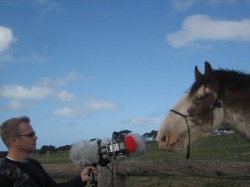
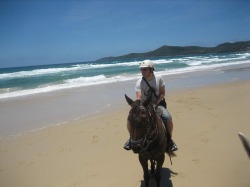
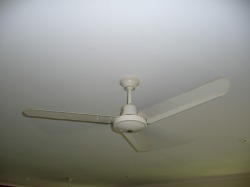
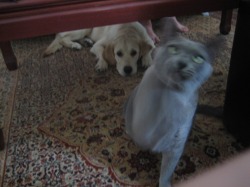
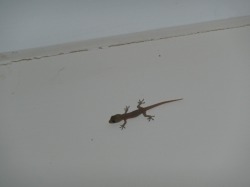
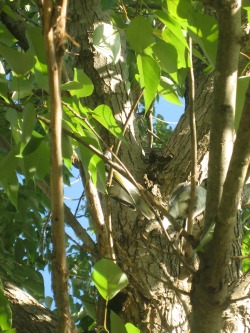
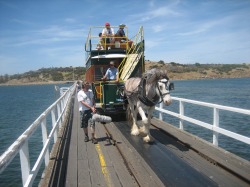
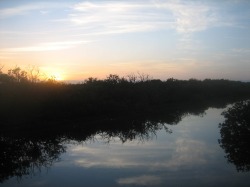
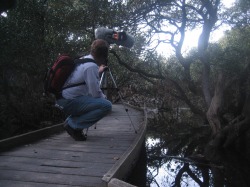
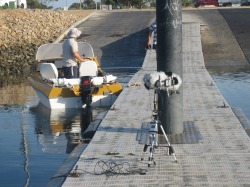
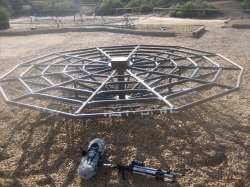
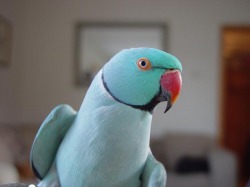
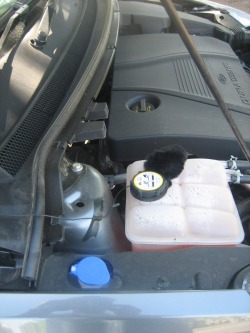
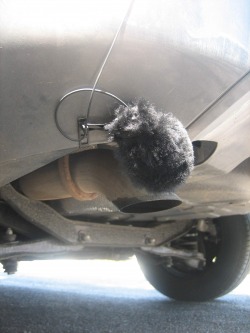
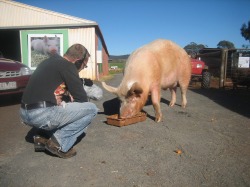
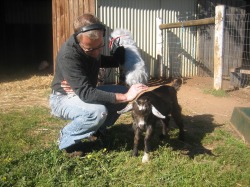
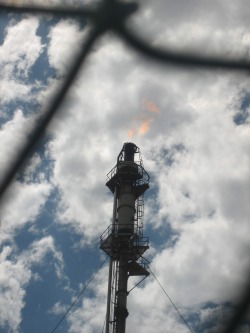
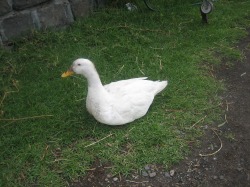
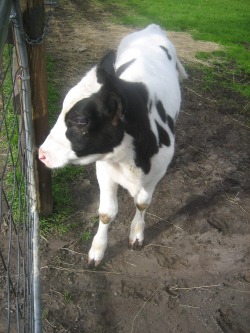
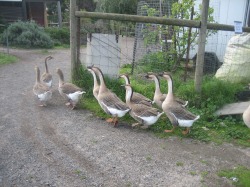
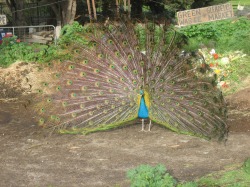
 RSS Feed
RSS Feed
